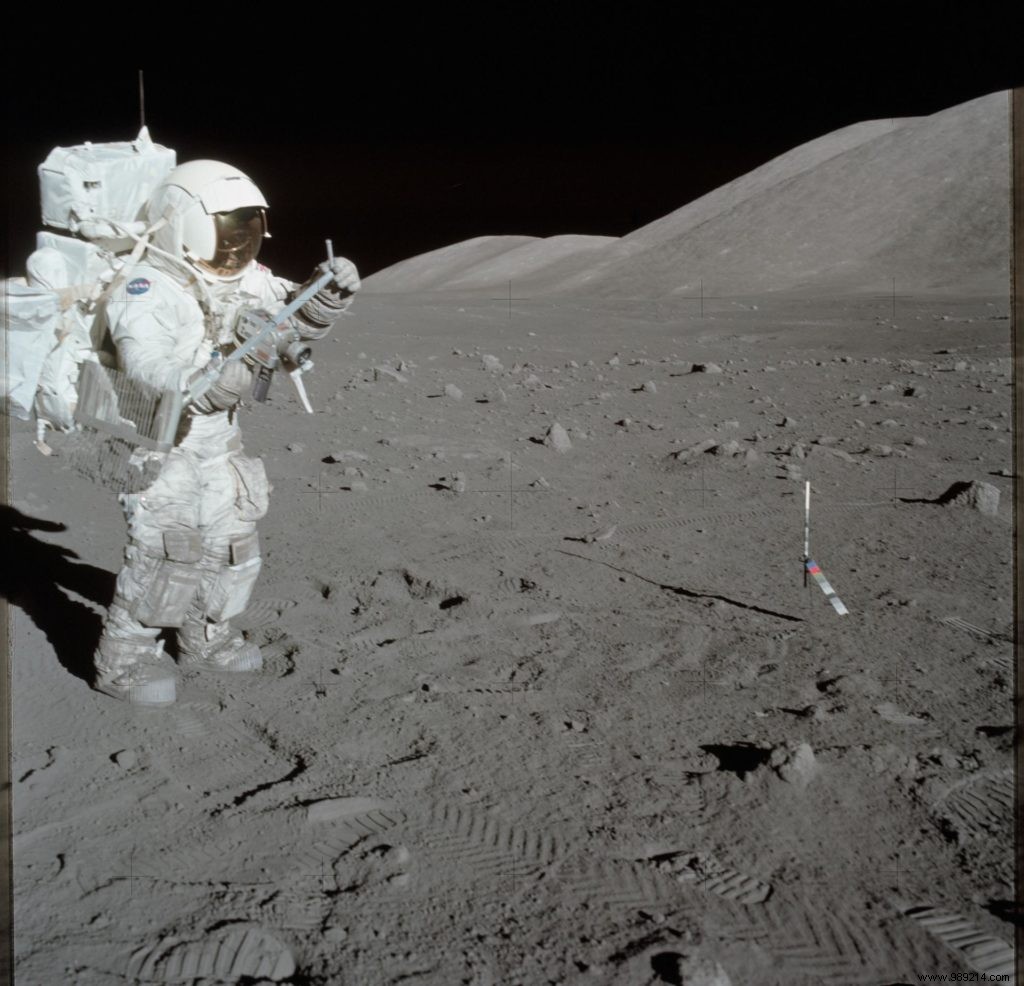Shunting an electron beam at spacesuits could blast off abrasive dust particles found on the Moon. The technique could prove very useful for future ARTEMIS missions.
From the Apollo missions, we know that the main danger when you are on the lunar surface is regolith. These are, very roughly, tiny, glass-like micrometeorite fragments. These dust particles are particularly sticky and very abrasive.
For the record, astronaut Harrison Schmitt, the twelfth and last man to set foot on the Moon (December 11, 1972), even developed an allergic reaction to this dust. One day, back in the module, Schmitt noticed that he was covered in regolith, from head to toe. When he took off his suit, he inadvertently inhaled it, developing a kind of "lunar hay fever".
It will have escaped no one that NASA wants to return to the Moon as part of the Artemis program. The American agency obviously intends to rely on the type of experience endured by Schmitt to make life easier for future astronauts sent on site.
As part of future missions, a new suit has therefore been designed to prevent any inhalation by the astronaut or contamination of his life support system. On the other hand, nothing currently prevents this dust from coming to "stick" to the suit.
These fine particles are indeed saturated with solar radiation, which gives them a positive charge. Therefore, regolith tends to be able to adhere to any sort of surface it comes in contact with. In the lunar low-gravity environment, these particles can also be easily lifted, either by the astronauts themselves or by micrometeorite impacts.
Astronaut suits aren't the only structures affected. Regolith can also reduce the performance of thermal control surfaces, or even obscure solar panels, reducing the ability to generate the electricity needed to operate a potential moon base.
That being said, researchers at the University of Colorado are currently working on how to "clean up" this lunar dust. And to do this, they use an electron beam.

In theory, a projected beam of electrons would indeed be able to penetrate the lower layers of the regolith. This would cause the emission of secondary electrons, also known as photoelectrons. A fraction of these secondary particles would then be absorbed in the microcavities separating the particles, depositing small negative charges as they pass.
In the idea, if enough electrons are pulled at the regolith, the buildup of negative charges on the fine particles could cause them to repel each other enough to overcome the forces that hold them together.
As part of this work, the researchers placed different materials coated with varying amounts of simulated regolith in a vacuum chamber. Among the samples was a piece of a space suit from the Apollo missions.
The researchers then observed that the particles "fly away" as expected after being hit by the electron beam. The success of the experiment obviously depended on the thickness of the dust, but overall, the technique would have made it possible to clean 75 to 85% of the fine particles .
Researchers are currently continuing these experiments with the aim of making the technique even more effective. It will also be about making it more "hands-on" for lunar exploration. But eventually, this new strategy, combined with the use of simple brushes, could be used by future astronauts to protect their equipment.